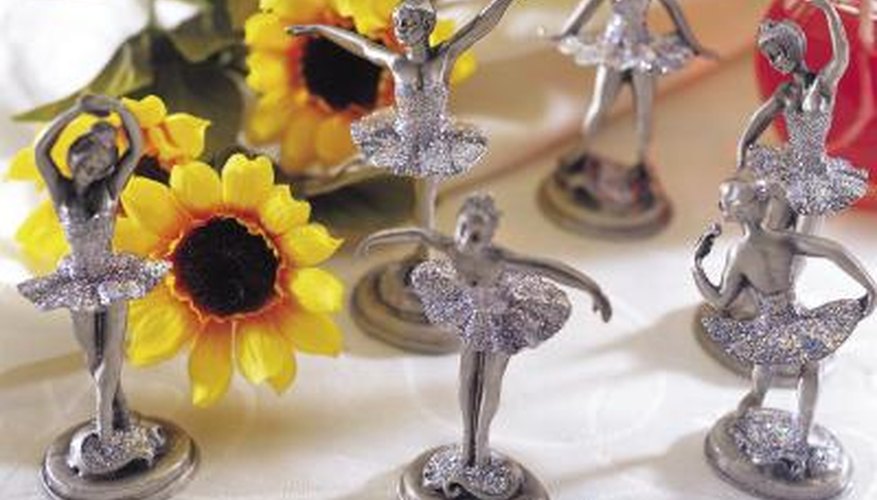Pewter is a composite metal with a long history that still finds plenty of use today. Pewter objects and items are everywhere; it is used in many applications, both practical and decorative. Pewter is easy to work with, able to be crafted into many shapes and forms and has a simple, understated beauty.
Components
Pewter is comprised primarily of tin. The tin is melted down and combined with other elements such as antimony, copper or bismuth. Historically, pewter was made by combing tin with copper and lead, as lead was cheap and easy to acquire. The lead was eventually replaced, due to its high toxicity and suitability to tarnishing, by antimony. This kind of pewter is referred to as Britannia Metal.
- Pewter is comprised primarily of tin.
- Historically, pewter was made by combing tin with copper and lead, as lead was cheap and easy to acquire.
Origins
The exact historical origins of pewter are hard to pinpoint. The earliest known example of pewter is an ancient Egyptian flask recovered at Abydos and dated to 1400 B.C. Ancient Romans were also known to use pewter objects -- such as bowls, saucers and plates -- as early as the second century A.D. The following centuries however, saw the usage of pewter all but disappear; in the 13th century pewter began to resurface as a substitute for silver and was popular among wealthy merchants as a status symbol. This popularity continued to grow, culminating in the late 17th century when pewter objects began to be replaced by lighter materials such as porcelain. During this time the invention of Britannia metal, which was lighter, kept pewter's popularity up through most of the Victorian period.
- The exact historical origins of pewter are hard to pinpoint.
- This popularity continued to grow, culminating in the late 17th century when pewter objects began to be replaced by lighter materials such as porcelain.
Practical Usages
Today pewter is used in many practical applications. Modern pewter follows the Britannia metal model and does not use any lead in its creation, as the toxins in the lead would be a health hazard. Today, one of the most common practical uses for pewter is in dining ware, as pewter has a very similar appearance to silver, but is much less expensive. You can find pewter eating utensils, plates, bowls, cups, pitchers and trays. You must be careful when using pewter in the kitchen, as tin has a very low melting point; pewter items should not be used to cook with and should not be put in an automatic dishwasher as the heat of the washer may deform the pewter or blacken it.
- Today pewter is used in many practical applications.
- You must be careful when using pewter in the kitchen, as tin has a very low melting point; pewter items should not be used to cook with and should not be put in an automatic dishwasher as the heat of the washer may deform the pewter or blacken it.
Decorative Usages
Pewter is also commonly used as a substitute for silver in many decorative items. Pewter is easy to mould and holds fine detail well, this lends itself to creating statuettes or decorative adornments on larger items. Pewter can also be found in any jewellery to lend the appearance of silver but without the cost.
